If you’re in the ophthalmology field, your tools are the lifeblood of your practice – and the slit lamp is no exception. Packed full of complex optics, this powerful device provides a magnified view of the eye structures, letting you diagnose a host of eye conditions. But to stay reliable and effective, a slit lamp demands regular maintenance. It may seem like a daunting task, but fear not! We are here to guide you through the process.
“An investment in knowledge always pays the best interest.” – Benjamin Franklin. In the case of a slit lamp, understanding its maintenance can yield significant dividends of device longevity and improved patient service.”
Whether you’re a seasoned professional or a novice in the field, this comprehensive guide is here to help you keep your slit lamp in top shape. Including simple routine checks and essential deep cleaning methods, we’ll ensure your equipment delivers at its best, day in and day out. So, sit back and let’s get your slit lamp maintenance journey started. Stay tuned!
Let’s begin with positioning. This might seem basic, but an optimal location for your slit lamp can significantly enhance its performance and longevity. Locate your slit lamp in a spot that is easily accessible and safe from extreme temperature fluctuations, as this can negatively impact its operation. A dry environment is also crucial to protect the instrument from fungal growth, which could cause severe damage. If you find your environment tends to be damp, consider utilizing silica gel desiccant or a dehumidifier for additional protection.
Regular operation checks are a must to keep your equipment operating smoothly. Aim for a weekly check to ensure all functionalities of the slit lamp are intact. Inputs not functioning at optimum levels? Or perhaps a button not responding as it should? Early detection of such irregularities can prevent more significant issues down the line, saving you considerable time and resources.
Proper cleaning is essential for the slit lamp, and it’s not as demanding as you might think. A weekly wipe with a damp cloth can do wonders for maintaining the appearance and functionality of your equipment. However, when cleaning the eyepiece optics and objective lens, extra caution is required to prevent scratches or other damage. Consider using specialized cleaning solutions for this delicate task.
Regular bulb replacement is integral to maintaining good illumination levels and enhancing the overall functionality of your slit lamp. Remember, always to unplug the lamp before changing bulbs. It’s best to avoid moving the lamp while the bulb is hot to prevent any damages. When not in use, a dust cover can protect your lamp from unwanted particles that may obscure the bulb.
Finally, let’s talk maintenance. For the smooth functioning of a slit lamp, regular calibration, cleaning, lubrication, and adjustments are indispensable. While the spare parts, like the bulbs, should be accessible and of good quality, the maintenance isn’t just about the parts—it’s also about keeping the lighting low between patient schedules and taking really good care of it in general. You might even consider professional servicing for your slit lamp to ensure it remains in the best possible condition.
| Slit Lamp Maintenance Aspects | Guidelines |
|---|---|
| Location | Place in an easily accessible area away from extreme temperatures. A dry environment is recommended to prevent fungal growth. |
| Cleaning | Weekly cleaning with a damp cloth, pay special attention while cleaning the eyepiece optics and the objective lens. |
| Operation Check | Weekly operational checks to ensure all functions are working optimally. Be cautious of issues with illumination, slit formation, and knob controls. |
| Storage | Cover the lamp with a dust cover when not in use. Use a silica gel desiccant or dehumidifier in damp environments. |
| Bulb Replacement | Be sure to unplug before changing bulbs. Pay attention to fingerprints left on the bulb as it may affect lighting quality. |
When handling Haag-Streit slit lamps, mirror maintenance requires special attention. The technique first entails separating the microscope from the illuminator for easy access. Use a pencil to gently pull out the mirror to avoid smudging. Dust off any residues and spray a mild glass cleaner on a clean, lint-free cloth. Carefully clean the mirror without exerting excess pressure, then wipe it until it is dry before reinserting it.
Voltage fluctuations pose a danger to your slit lamp’s life span. A good safeguard is to plug the slit lamp into a regulator whenever there’s a surge or drop in voltage. Also, keep the illumination at a low level between patients to conserve energy and reduce the strain on the lamp.
To preserve the longevity of your slit lamp, it’s essential to handle it with care. Avoid moving the lamp when the bulb is hot; this can extend the life of the bulb and ensure optimal performance. Also, give the equipment a moment to cool before you cover it with a dust cover.
Keeping the control systems of your slit lamp in their optimal state is essential for precise diagnosis. Regular calibration and lubrication, followed by adjustments, allow this medical equipment to function smoothly. Whether it’s the brightness control, joystick movement, table movement, chin support adjustment, or slit control changes – these parts need weekly checks.
However, sometimes the responsibility of maintaining this delicate, yet significant, instrument falls upon a single person in the clinic. If you happen to be that person, don’t worry. A systematic approach can simplify this task.
Begin by making a checklist of different functions that need weekly monitoring. Keep the lines of communication open with your maintenance team or service agent – contact them if any issue arises during the checks. Remember, timely intervention can prevent small issues from escalating into costly repairs.
Equally, maintaining an adequate inventory of replacement bulbs and batteries can save you from emergency situations. No patient would appreciate a delay in their checkup due to a lack of supplies, would they?
Another simple yet effective way to maintain your slit lamp is to protect it against dust. Use the provided dust covers when the equipment is not in use. Sounds simple enough, right? But it’s surprising how often this practice is ignored, leading to unexpected complications in the device’s functions.
Think of dust as your equipment’s arch-nemesis. This microscopic material can infiltrate your device’s sensitive parts, hindering performance and even causing damage. To keep this unwanted visitor at bay, cover your slit lamp with the supplied dust covers whenever it’s idle. It’s a simple step that goes a long way in keeping your equipment in optimal condition.
Another essential aspect to look out for is your equipment’s location. Place your slit lamp in a spot that’s easily accessible, not exposed to extreme temperatures, and in a dry environment. These steps can regulate the working conditions and prevent issues such as fungal growth.
Consistent cleanliness should be your slit lamp’s best friend. We recommend cleaning it at least once a week with a damp cloth. Be cautious when cleaning the eyepiece optics and objective lens. They may require additional attention to ensure optimal performance. However, you need to be extra gentle to prevent any unintentional damage.
Do you use a Haag-Streit slit lamp with mirrors? Then here’s a pro tip: start by separating the microscope and illuminator, draw out the mirror using a pencil, dust, then clean with glass cleaner, and keep wiping until dry. It’s simple once you get the hang of it, and your lamp will thank you for it!
Let’s talk about control systems. These need regular calibration, cleaning, lubrication, and adjustments for the smooth functioning of your slit lamp. Yes, it might sound like a lot of work to do, but trust us on this one. This meticulous attention to detail will prolong your equipment’s life and save you from unwanted repair costs down the road.
Last but certainly not least, operational checks. Consistently ensuring that all functions of your slit lamp are working properly is crucial. You wouldn’t want a surprise malfunctioning right in the middle of a patient’s examination, would you? So, make it a practice to perform these checks weekly. Remember, prevention is always better than cure!
| Control Function | Test Method |
|---|---|
| Brightness control | Ensure the light adjusts when brightness control is moved |
| Table movement | Verify the table moves smoothly in all directions without vibration |
| Chin support adjustment | Check that chin support moves up and down without struggle |
| Joystick movement | Confirm the joystick controls move smoothly and respond accurately |
| Slit control changes | Adjust the slit aperture and ensure it changes size accordingly |
Perfect rotation is key in slit lamp functioning. Start by inspecting the illumination rotating arm. It should not only move smoothly but also properly lock in place using the locking screw. If there’s resistance or difficulty in locking the arm, it indicates that servicing is needed. The same goes for the microscope rotating arm. Make a habit to routinely inspect these arms, as early detection of issues can prevent further damage.
Don’t forget about the critical yet often overlooked mechanical device located behind the slit lamp objective lens. This device is responsible for adjusting pupil distance, so it’s essential that it’s operating without a hitch. Smooth manoeuvrability is the hallmark of a well-maintained slit lamp, and this applies to all its moving parts. Any roughness or difficulty in movement should be flagged immediately.
Another important feature worth your attention is the slit lamp’s lighting tilt latch. This control changes the lighting angle in stages, offering you different examination perspectives. Proper functioning is shown when it switches angles without any hitches or pauses. If not, it’s time to call in professional help.
Lastly, don’t underestimate the importance of regular operational checks. Conducting them weekly ensures the various functions of the slit lamp are working as they should, ultimately guaranteeing reliable and precise eye examinations. Add these checks to your routine and underline their importance to any staff members involved in equipment maintenance. Remember, a well-maintained slit lamp is less likely to experience common issues such as illumination troubles, aperture not holding, and problematic knob controls.
A comprehensive check should include assessing the brightness control, table movement, chin support adjustment, joystick movement, and slit control changes. This ensures effective operation of the device.
The slit lamp should be cleaned at least once a week with a damp cloth. Extra attention should be given to the cleaning of eyepiece optics and lenses, which might require more frequent cleaning depending on usage.
Common issues include illumination problems, difficulties with the slit formation, and knob control troubles. Regular maintenance and checks can prevent or catch these problems early.
It’s preferable to place the slit lamp where it is easily accessible. Avoid temperature extremes and ensure a dry environment to prevent fungal growth.
During voltage fluctuations, insert the slit lamp into a regulator. Try to keep the illumination at a low level between patients, and avoid moving the lamp when the bulb is hot.
Adhering to these preventive steps will help prolong the use of your slit lamp, ensuring uninterrupted examinations and precise diagnosis. Avoid exposing your lamp to extreme temperatures and always keep it in a dry environment to avert fungal growth. Cover your lamp with a dust cover when not in use, and if you’re in a damp environment, consider using a silica gel desiccant or a dehumidifier.
Stay consistent with weekly cleanings, using a damp cloth to gently wipe down your lamp. And remember, when handling the bulb, ensure your hands are clean to prevent leaving residues which may cause hot spots.
For a slit lamp that’s not operating, try these simple solutions: replace the bulb, clean the contacts on the bulb cap, check the electrical connections, or inspect the transformer for a faulty fuse. Other operational checks to be conducted weekly involve assessing the different functions of the slit lamp to ensure its working optimally.
At the heart of all this is a commitment to regular maintenance to keep your lamp in peak condition. This includes regular calibration, cleaning, lubrication, and adjustments of control systems. Also, ensure your slit lamp’s location is accessible, away from extreme temperatures, and in a dry environment.
Investing in regular maintenance can save you from the trouble of malfunctions during critical examinations, ensuring the smooth running of your practice. It might seem daunting initially, but with time, it becomes a routine part of ensuring quality patient care.
Maintaining your slit lamp might feel overwhelming, but you’re not alone. IKISTC is always ready to support you. Our experienced team can provide expert advice, maintenance services, and comprehensive ranges of Slit Lamps, ensuring optimal functionality for your practice. Visit IKISTC today to learn more and get the support you need for your practice’s success.
VISIT OUR SHOP
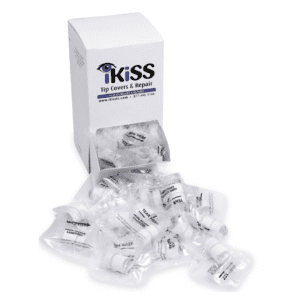
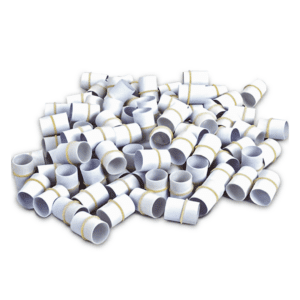
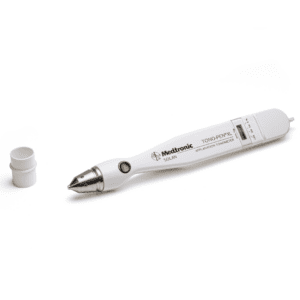
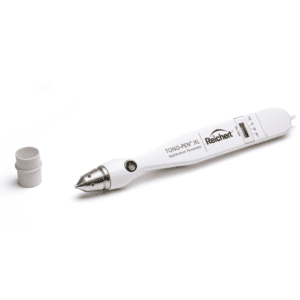
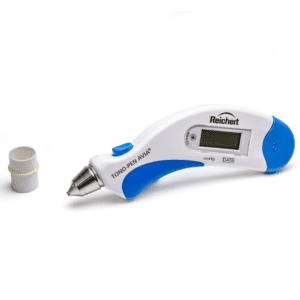
iKiSS is the go-to provider for top-quality refurbished Tono-Pen® Tonometers, Tono-Pen AVIA® Tonometers, Slit Lamps, and Phoropters, offering substantial savings of up to 40%.